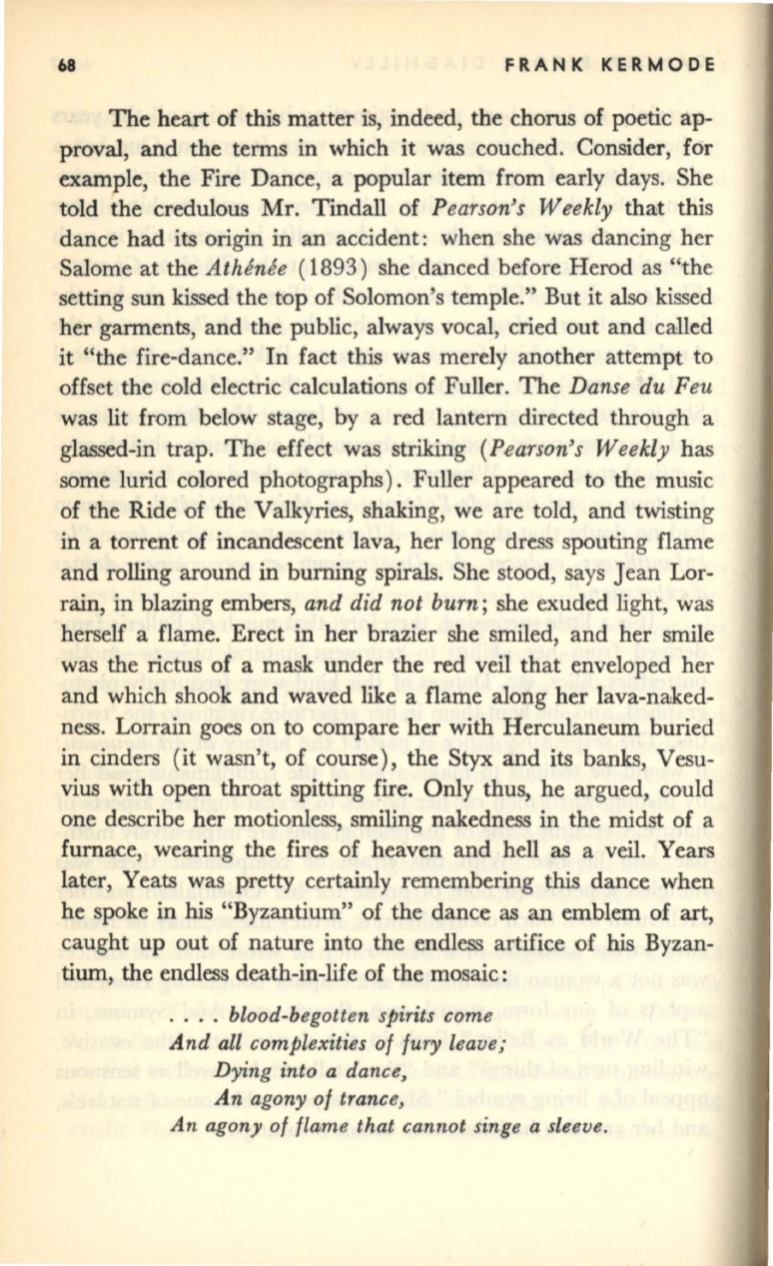
68
FRANK KERMODE
The heart of this matter is, indeed, the chorus of poetic ap–
proval, and the terms in which it was couched. Consider, for
example, the Fire Dance, a popular item from early days. She
told the credulous Mr. Tindall of
Pearson's Weekly
that this
dance had its origin
in
an accident: when she was dancing her
Salome at the
Athenee
(1893) she danced before Herod as "the
setting sun kissed the top of Solomon's temple." But it
also
kissed
her garments, and the public, always vocal, cried out and called
it "the fire-dance." In fact this was merely another attempt to
offset the cold electric calculations of Fuller. The
Danse du Feu
was lit from below stage, by a red lantern directed through a
glassed-in trap. The effect was striking
(Pearson's Weekly
has
some lurid colored photographs). Fuller appeared to the music
of the Ride of the Valkyries, shaking, we are told, and twisting
in a torrent of incandescent lava, her long dress spouting flame
and rolling around in burning spirals. She stood, says Jean Lor–
rain, in blazing embers,
and did not burn;
she exuded light, was
herself a flame. Erect in her brazier she smiled, and her smile
was the rictus of a mask under the red veil that enveloped her
and which shook .and waved like a flame along her lava-naked–
ness. Lorrain goes on to compare her with Herculaneum buried
in cinders (it wasn't, of course), the Styx and its banks, Vesu–
vius with open throat spitting fire. Only thus, he argued, could
one describe her motionless, smiling nakedness in the midst of a
furnace, wearing the fires of heaven and hell as a veil. Years
later, Yeats was pretty certainly remembering this dance when
he spoke in his "Byzantium" of the dance as an emblem of
art,
caught up out of nature into the endless artifice of
his
Byzan–
tium, the endless death-in-life of the mosaic:
....
blood-begotten spirits come
And all complexities of fury leave;
Dying into a dance,
An agony of trance,
An agony of flame that cannot singe a sleeve.


